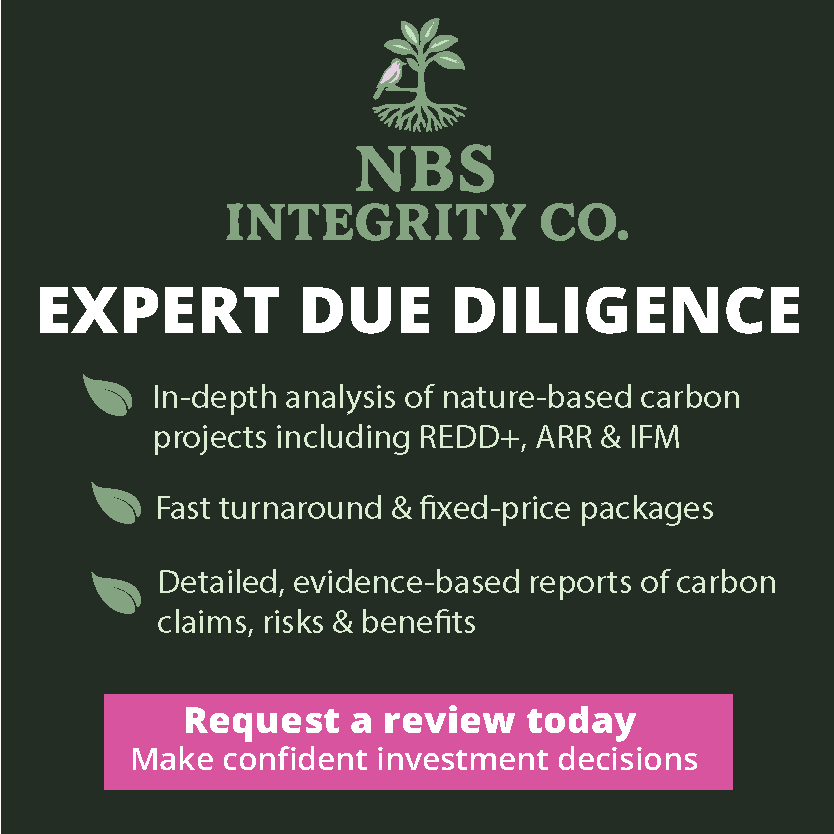By David Shoch, Scott Settelmyer, and Rebecca Dickson, of TerraCarbon LLC
We’ve come a long way since 1979, when leading scientists from around the world first formally warned that deforestation was a significant contributor to global climate change.
The interactions between human activities, terrestrial ecosystems, and the atmosphere are complex and dynamic, and it took a while before frameworks were in place to account the benefits of climate actions in the agriculture, forestry and other land use (AFOLU) sector. Some of the original guidance on project-based AFOLU activities was published by the IPCC in 2000.[1]
By 2010, the science had advanced enough to create financing mechanisms for “REDD,” which stands for “Reducing Emissions from Deforestation and forest Degradation.” Voluntary carbon market finance supporting REDD activities depends on effective forest conservation, and on appropriate and reliable tools for measuring and accounting the benefits of climate actions– called “carbon methodologies.”
Just as our understanding of climate science continues to advance, carbon methodologies likewise must not be static constructs, but rather must continue to evolve and improve in step with advancements in knowledge and technology. The development and refinement of carbon methodologies is a deliberate and ongoing process involving research, testing and critical evaluation, and draws on the contributions of researchers, practitioners, auditors and the standards that administer them. This process doesn’t involve replacing or invalidating established approaches, but instead building on and improving them over time.
Prior to the establishment of formal REDD methodologies, Sandra Brown, a leading pioneer in forest carbon science and mentor to many, led a team of researchers testing approaches to set REDD baselines in a wide range of landscapes. Their findings were published in 2007 in Mitigation and Adaptation Strategies for Global Change[2], and were later incorporated into some of the first REDD methodologies approved by the Verified Carbon Standard (VCS) in 2010.
While those first REDD methodologies reflected the best available science at the time, they did not represent an end point. Since then, the methodologies have been progressively refined as new science became available. As an example, an integral part of REDD baselines involves predicting deforestation risk at small scales (“risk mapping”). As predictive models continued to be improved, together with advancements in satellite sensors and classification techniques of land cover change, researchers at Clark University, led by Gil Pontius, published new findings and recommendations regarding how model goodness-of-fit should be evaluated[3]. These recommendations, and new metrics to evaluate model reliability, were subsequently incorporated into the methodologies as revisions, improving confidence in this aspect of baseline setting. The soon-to-be released consolidated REDD methodology developed under Verra’s VCS Program represents the latest step in this process to draw on the latest science to build on and strengthen methodologies.
This active interface with the latest science has led to important innovations making possible carbon accounting of new AFOLU activities. With The Nature Conservancy, TerraCarbon developed the first standardised method for baseline setting in the AFOLU sector in the VCS Reduced Impact Logging (VM0035[4]) methodology. The methodology, approved in 2015, was based on extensive research in East Kalimantan, Indonesia, led by Bronson Griscom and Peter Ellis, published in Global Change Biology in 2014[5]. Informed by new research initiatives, the geographic scope of the methodology has been expanded incrementally to include new forest landscapes, including the Yucatan peninsula of Mexico, Republic of Congo and Suriname (the last two in development).
More recently, TerraCarbon has led the introduction of new impact evaluation approaches to carbon methodologies, involving direct observations in matched controls to produce dynamic baselines. This work was preceded and informed by a research effort undertaken by TerraCarbon and colleagues from North Carolina State University, IMAZON and Duke University, piloting the application of the Synthetic Control Methodology (SCM) in Brazil, to evaluate the avoided deforestation impact of the Green Municipalities Program administered by the state of Para, and published by Erin Sills and her team in PloS ONE in 2015[6]. Dynamic approaches like SCM and nearest neighbour matching offer important improvements over baselines that rely on fixed historic assumptions. Because controls representing the baseline are observed ex post using dynamic approaches, and are subject to the same externalities like policy, markets and climate as the project, dynamic approaches have the potential to better resolve and attribute impacts back to the actions that produced them, the central aim of any carbon methodology. We have incorporated dynamic approaches in the American Carbon Registry’s Restoration of Pocosin Wetlands methodology[7] approved in 2017, in the VCS Methodology for Improved Forest Management (IFM) Using Dynamic Matched Baselines from National Forest Inventories (VM0045[8]), approved in 2022, and in the upcoming VCS Methodology for Afforestation, Reforestation and Revegetation (ARR) Projects.
Dynamic approaches like these deserve serious consideration more broadly in the AFOLU sector, and have the potential to make valuable contributions in accounting for REDD, that can build on or complement existing approaches. TerraCarbon maintains our commitment to support the work of Verra and other voluntary carbon standards in their continual effort to critically evaluate and improve carbon methodologies. New approaches, however, require testing to determine their appropriateness across varying circumstances, and to this end, TerraCarbon will be working with partners over the next year to pilot applications of dynamic baseline approaches in the context of REDD across a range of forest landscapes, evaluating the benefits they can offer. We plan to share the results publicly, and where they show promise we will solicit broader engagement on how they can be integrated into, and strengthen the integrity of, existing accounting frameworks, including emerging jurisdictional baselines.
Non-market approaches that rely on public and philanthropic funding have been insufficient to stem global deforestation and its contribution to climate change. Market-based approaches, that are results-based and supported by sound accounting methods, are crucial to expanding and scaling finance from public and private sources to protect the world’s remaining forests. The ongoing need to evaluate and refine accounting methods, incorporating new data and new understanding, is not a fatal flaw in the market. Rather it is a natural and essential process that we will support so that market-based finance can be delivered more efficiently and urgently to fight climate change and conserve forests around the world.
- [1] Brown, S., Masera, O., & Sathaye, J. 2000. Project based activities. In R. T. Watson, I. R. Noble, B. Bolin, N. H. Ravin-dranath, D. J. Verardo, and D. J. Dokken (Eds.), Land use, land-use change and forestry: A Special report of the IPCC(pp. 283 – 338). Cambridge: Cambridge University Press
- [2] Brown, S. et al. 2007. Baselines for land-use change in the tropics: application to avoided deforestation projects. Mitigation and Adaptation Strategies for Global Change, 12, pp.1001-1026.
- [3] Pontius Jr, R. G. (2018). Criteria to Confirm Models that Simulate Deforestation and Carbon Disturbance. Land, 7(3), 14. https://doi.org/10.3390/land7030105
- R G Pontius Jr, et al. 2008. Comparing input, output, and validation maps for several models of land change. Annals of Regional Science, 42(1): 11-47.
- R G Pontius Jr et al. 2007. Accuracy assessment for a simulation model of Amazonian deforestation. Annals of Association of American Geographers, 97(4): 677-695.)
- [4] https://verra.org/methodologies/vm0035-methodology-for-improved-forest-management-through-reduced-impact-logging-v1-0/
- [5] Griscom, B., Ellis, P. and Putz, F.E., 2014. Carbon emissions performance of commercial logging in East Kalimantan, Indonesia. Global Change Biology, 20(3), pp.923-937.
- [6] Sills, E.O., Herrera, D., Kirkpatrick, A.J., Brandão Jr, A., Dickson, R., Hall, S., Pattanayak, S., Shoch, D., Vedoveto, M., Young, L. and Pfaff, A., 2015. Estimating the impacts of local policy innovation: the synthetic control method applied to tropical deforestation. PloS one, 10(7), p.e0132590.
- [7] https://americancarbonregistry.org/carbon-accounting/standards-methodologies/greenhouse-gas-benefits-of-pocosin-restoration
- [8] https://verra.org/methodologies/methodology-for-improved-forest-management/
TerraCarbon LLC is a US-based advisory firm that helps develop carbon offset projects to fund natural climate solutions. It supports natural climate solutions (NCS) that involve restoration, improved management, and conservation activities that increase carbon storage and/or avoid greenhouse gas emissions in forests, wetlands, grasslands, and agricultural lands around the world.
Any opinions published in this commentary reflect the views of the author and not of Carbon Pulse.




